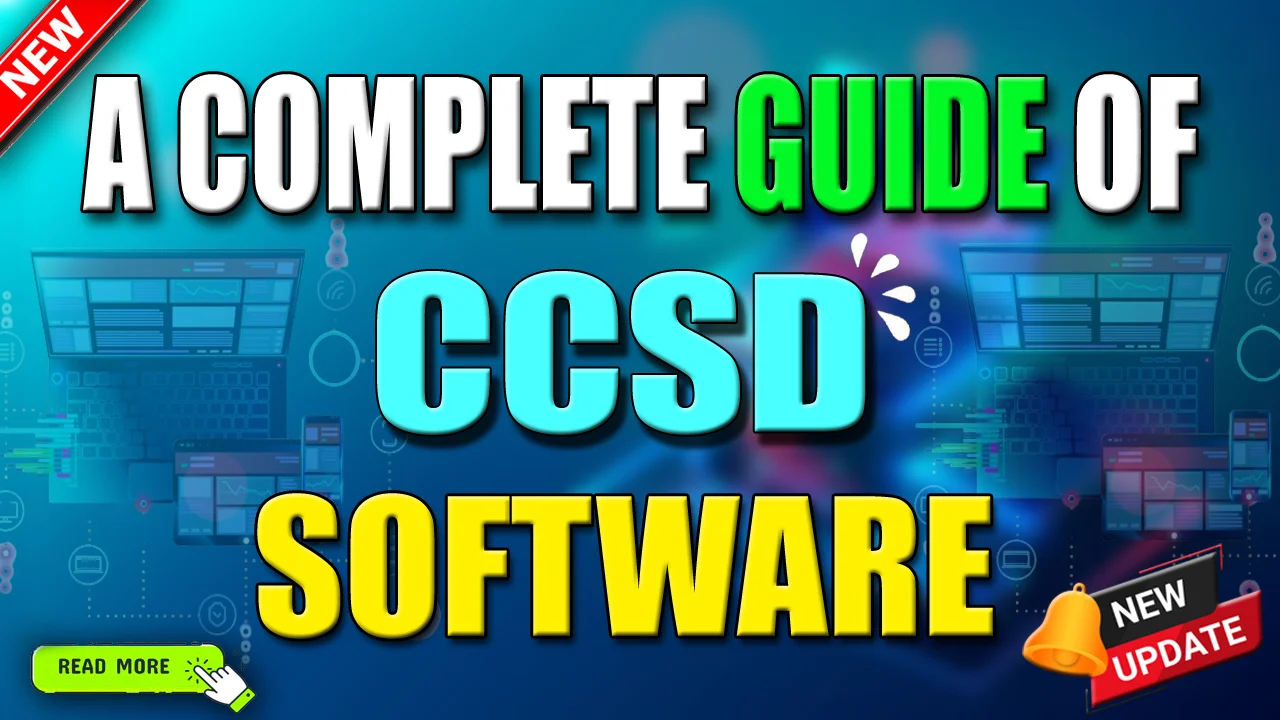In computational science, CCSD Software programming serves as a foundation that enables experts to go deeper into the subatomic region with remarkable accuracy and experience.
Programming arrangements have become the foundation of many businesses in the rapidly evolving field of innovation, providing capable tools for helping to simplify processes, boost productivity, and accelerate development.
CCSD, an abbreviation for (Coupled Bunch Singles and Copies), remains as a critical strategy in quantum science. It fills in as a powerful device for directing exact computations of sub-atomic properties, working with a more profound comprehension of the sub-atomic designs that structure the premise of our compound world.
Functions and Features
School chairmen frequently use CSD programming to deal with reports and track understudy information. Given the wealth of potential outcomes, choosing all that one for your establishment could challenge. We have ordered an exhaustive outline of what each CCSD programming brings to the table to settle on your decision simpler.
We will begin with Naviance, which is for quite some time thought about the highest quality level of CSD programming. Following that, we’ll examine two additional famous projects, Progress note and Schoology, and offer a once-over of their elements.
Then, to look further into what they can achieve for you, we happen to additional specific arrangements like Nessie NET and Eschol Collaboration.
At long last, we exhort choosing the best CCSD program for your establishment. This guide ought to improve on the methodology and point you in the correct heading.
Advanced Performance Measurements
Performing CCSD involves complex calculations and processes that may require large processing resources. High-performance computing (HPC) systems are frequently employed to manage the demanding computational requirements associated with CCSD estimations.
When calculations are ran, many processors or registration centers can be used effectively, which significantly reduces the amount of time needed for events.
Yet, CCSD has certain limitations despite its accuracy and consistency. Huge subatomic structures are problematic because to the unstable increase in computational cost with framework size.
Consequently, experts frequently employ guesses or crossover moves toward that consolidate CCSD with multiple approaches in order to adjust exactness and computational efficiency.
A CCSD programming
Various CCSD programming substitutes are accessible, each with one of a kind benefits and impediments. We’ve gathered a rundown of the essential CCSD programming classifications to help you in concluding which is best for your school.
Picking The Right CCSD Programming
Choosing the most reasonable CCSD programming includes a careful comprehension of the particular requirements of a foundation. The interaction incorporates:
- Surveying institutional necessities.
- Looking at highlights.
- Taking into account spending plan requirements.
- Using times for testing or demos.
- Gathering client criticism and surveys.
- Each step adds to guaranteeing that the chose CCSD programming adjusts consistently with the objectives and functional necessities of the establishment.
CCSD In real life – Applications Past Science
The utility of CCSD programming reaches out past the limits of science, displaying its adaptability in different logical areas.
Its applications length physical science, materials science, and natural chemistry, permitting scientists to foresee atomic calculations, recreate spectroscopic properties, and explain response components. This flexibility positions CCSD as an important device for progressing logical information across different disciplines.
Institutional Setting – Oak Edge Public Lab (ORNL)
The urgent progression of CCSD and computational sciences is altogether impacted by the vital pretended by the Oak Edge Public Research facility (ORNL). Its critical assets, aptitude, and drives add to the improvement of artificial intelligence, elite execution registering, and quantum data science.
The foundation of the Quantum Science Center (QSC) highlights ORNL’s devotion to state of the art research in quantum processing, exhibiting its obligation to pushing the limits of logical comprehension.
CCSD’s Commitment To Hypothetical Science
CCSD programming fills in as an incredible asset for unraveling the sub-atomic language by tackling the Schrödinger condition, a central condition in quantum mechanics. This computational ability empowers the exact forecast of atomic designs, energies, and different properties.
The hypothetical structure of CCSD, grounded in the idea of electron connection, recognizes it from additional direct strategies by representing both single and twofold excitations.
Difficulties And Future Possibilities
While CCSD remains as a robust in computational science, it isn’t without its difficulties. Huge atomic frameworks present computational obstacles due to heightening expenses. Regardless of these difficulties, continuous headways in calculations and registering structures hold the commitment of beating limits, cultivating revelations, and driving developments in hypothetical science.
CCSD Programming And Man-made brainpower
With north of 40 years of artificial intelligence research, ORNL’s simulated intelligence Drive guarantees the combination of secure, dependable, and energy-productive artificial intelligence in public safety and logical examination.
The progress of fundamental projects has prompted the making of the Quantum Science Center, filling in as a center for quantum data science research. This harmonious connection between CCSD programming and simulated intelligence features the interdisciplinary idea of progressions in computational sciences.
The Scope of a CCSD Programming
A few software packages provide CCSD projects, each with unique features, functionalities, and user interfaces. A few important programming tools include PSI4, Q-Chem, NWChem, and Gaussian.
These packages provide users with a configuration of features for CCSD estimations as well as additional tools for analyzing outcomes and visualizing subatomic details.
Several logical domains, such as physics, physical science, materials science, and natural chemistry, are affected by the use of CCSD programming.
Applications include predicting atomic energies and computations, simulating spectroscopic features, and elucidating response instrumentation.
Also Read What is GOC Technology?
FAQs on CCSD
What is CCSD Software?
CCSD programming is known as a foundation that enables experts to go deeper into the subatomic region with remarkable accuracy and experience.
Conclusion
All things considered, CCSD programming emerges as a pillar of computational science, providing experts with the tools to study the subatomic realm with unparalleled precision. Its applications, which include navigating various logical spaces, demonstrate how versatile it is.
The ongoing creation of improved calculations and planning techniques bears the burden of increasing the significance of CCSD as development moves forward, offering yet another season of information and achievements in speculative science.
CCSD programming seems to have a bright future ahead of it, as its reliability and precision keep helping us understand difficult chemical systems over time.





